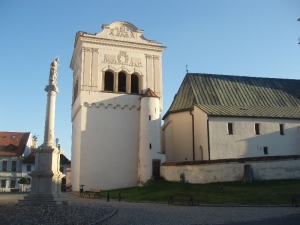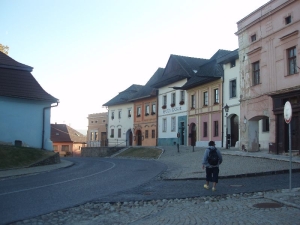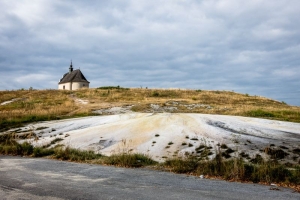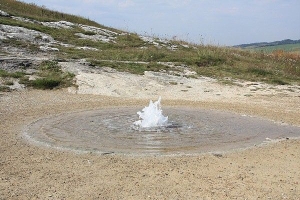July is the month when Slovakia’s main holidays begin. Schools are closed and children are ready for summer discoveries and adventures. One Slovak mother decided to give her fifteen-year-old son a real gift – a trip to the highest peak of High Tatras, Gerlachovský štít (2655 m). Obviously he could not go there alone, someone of any age would need a mountain guide. And the mountain guide took his duty not only seriously, but also sympathetically and thoroughly. First he took the boy to a mountain hut as a base for the hiking tour and there, together with other mountaineers, they spent the night. Early next morning, tied to each other by a hiking rope, they headed toward the skies. Everybody was satisfied – the guide with his brave client, the mother with her idea and the boy with the experience of a lifetime. It isn´t necessary to follow their risky tour, but when you are in Slovakia it is absolutely necessary to see a High Tatras crowned by Gerlachovský štít.

Even the couple from Connecticut whom I met last summer at the mountain hostel “Zamkovského chata” was well aware of this necessity. Both retired, they had heard about the beauty of our Pocket Himalayas from their tourist club. And they were enjoying every step of their journey – the flight to Munich, the train to Vienna, the river-boat to Bratislava and the train to the city of Poprad, gate to the High Tatras. More about this place you may learn there, but it is useful to know that on the other side of the Váh river valley are the Low Tatras and between these two mountain ranges is one extraordinary region called SPIŠ (in German it has funny name Zips). Closest to these mountain is a diamond among historical sites of this region, pitaresque town Spišská Sobota, now at a outskirt of city Poprad.



Next to Spišská Sobota is aquapark where You may refresh yourself.
Right in the far eastern corner of the High Tatras is Pieniny National Park with the captivating canyon of the Dunajec River. Rafting on a traditional wooden raft steered by a professional rafter in folklore costume (in the old days wood was transported this way) along sometimes wild waters you may enjoy marvelous scenic views!
Not far from there is the medieval castle Ľubovňa used by filmmakers to make historical movies. Under the castle you will find open-air museum (“skansen”) of an old Slovak village with a picturesque wooden church.
The closest city from there is Kežmarok, with a castle from 1463 in the center and the wooden church, built in 1717, biggest of this kind in the whole region.
Nearby is the city of Levoča, known in history since 1249, with preserved stone walls and St. Jacob church, which has the highest gothic altar (18,62 m) in the world, the masterpiece of Master Paul.
In a nearby Spišská Nová Ves you may find a smallest but cute ZOO in former Czecho-Slovakia. Its charming director supported of the contest of the children who will make nicer picture of animals that has their home here. More about this attraction You may find here.

Another historical record belongs to one of the biggest castles in Europe (40 000 square meters), Spišský hrad. It is on the UNECO world heritage list. You may reach it in the same one-day trip as the cities and river-tour mentioned previously. Below the castle is the unique fortified residence of the bishop, Spišská Kapitula, build in the 13th century.


A few steps away you may find a natural mineral spring, Sivá brada, to taste at your will. Slovakia has numerous mineral water springs – some open to the public, others whose waters can only be found bottled in supermarkets. They go well with popular summer meals called “lečo” and “plnená paprika”. “Lečo” is a mixture of pieces of sausage, paprika, tomato, and onion mixed with scrambled eggs. “Plnená paprika” is a big paprika filled with a mixture of meat and rice and usually it is served with boiled potatoes. And believe me, after the tour under the High Tatras peaks, or a trip through the Spiš region, you will enjoy these typical homemade Slovak meals. Our saying is: “Hunger is the best cook”. And here you will never be hungry…
Gustáv Murín











